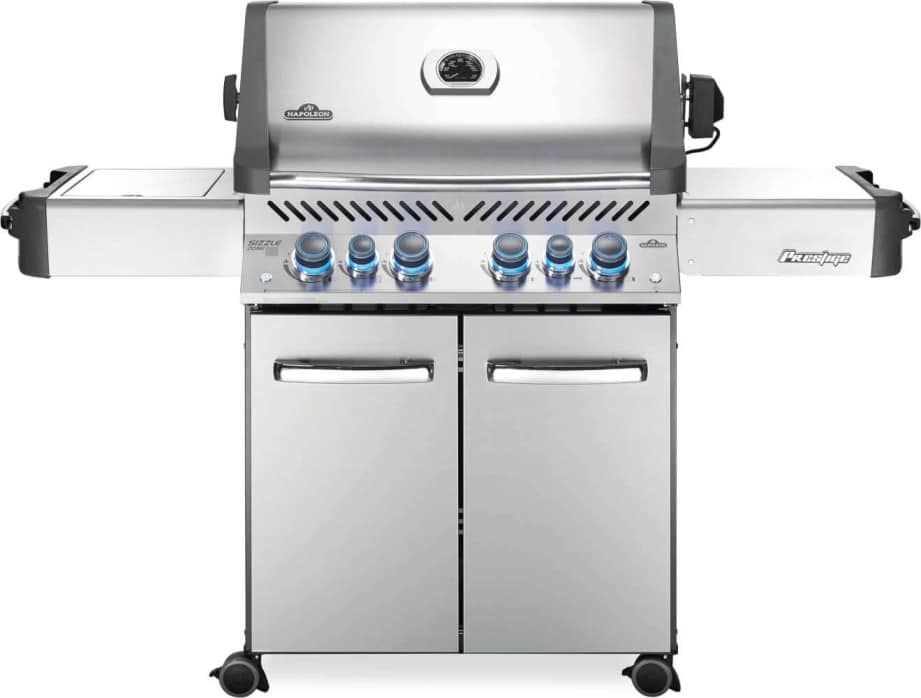A kitchen garden is a small plot of land where fruits, vegetables, and herbs are grown for household use. Kitchen gardens are usually located close to the house so the family can easily access the fresh produce. These types of gardens have been around for centuries and were once a common feature in most households. Nowadays, however, they are becoming increasingly popular as people become more interested in healthy eating and sustainable living.
Why have a kitchen garden?
There are many benefits to having a kitchen garden. First of all, it provides the family with fresh, healthy food that has not been exposed to pesticides or other chemicals. homegrown fruits and vegetables contain higher levels of vitamins and minerals than their store-bought counterparts. Additionally, growing your own food can save you money in the long run. And finally, it is a great way to get outside and enjoy the fresh air!
Thinks to consider
If you are thinking about starting a kitchen garden, there are a few things you will need to consider. First of all, you will need to choose a location for your garden. It is important to choose a spot that gets plenty of sunlight and has good drainage. You will also need to make sure that the area is large enough to accommodate the type of plants you want to grow.
Once you have chosen a location, you will need to prepare the soil. This can be done by tilling the ground and adding organic matter such as compost or manure. Once the soil is prepared, you can start planting your seeds or seedlings. When selecting plants for your garden, choosing varieties that are well-suited to your climate and soil type is important.
Plants to grow in the Kitchen garden
Some good plants to grow in a kitchen garden include tomatoes, peppers, eggplants, cucumbers, and leafy greens such as spinach and lettuce. Herbs such as basil, oregano, thyme, and rosemary also do well in these types of gardens. You can also try growing fruits such as strawberries, raspberries, blueberries, and blackberries.
Once your plants are in the ground, you must regularly water them. They also require regular fertilizing in order to produce a good crop. When harvesting your fruits and vegetables, picking them at the peak of ripeness is important. This will ensure that they are at their best when eaten.
With a little bit of planning and effort, you can have a thriving kitchen garden that will provide you with fresh, healthy food all year round. So get out there and start growing!
About Tomatoes and how to grow them in your kitchen garden
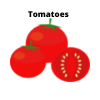
Tomatoes are a popular choice for growing in a kitchen garden. They are easy to grow and produce a large crop. tomatoes come in many different varieties, so you can choose the ones that best suit your climate and soil type.
When planting tomatoes, it is important to space them at least two feet apart. This will allow them room to grow and produce a good crop. Tomatoes also need a lot of sunlight, so planting them in an area that gets at least six hours of direct sunlight each day is best.
In order to produce the best crop possible, it is important to water your tomatoes regularly. They also require regular fertilizing. When harvesting your tomatoes, it is important to pick them at the peak of ripeness. This will ensure that they are at their best when eaten.
About Cucumber and how to grow them in your kitchen garden
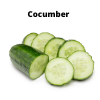
Cucumbers are another popular choice for growing in a kitchen garden. They are easy to grow and produce a large crop. Cucumbers come in many different varieties, so you can choose the ones that best suit your climate and soil type.
When planting cucumbers, it is important to space them at least two feet apart. This will allow them room to grow and produce a good crop. Cucumbers also need a lot of sunlight, so planting them in an area that gets at least six hours of direct sunlight each day is best.
Growing pepper in your kitchen garden

Peppers are a popular choice for growing in a kitchen garden. They are easy to grow and produce a large crop. Peppers come in many different varieties, so you can choose the ones that best suit your climate and soil type.
Spinach
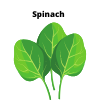
Spinach is a cool-season crop that can be grown in both spring and fall. When planting spinach, choosing a location that receives full sun is important. The soil should be well-drained and rich in organic matter. Spinach seeds can be sown directly in the garden or started indoors and transplanted outdoors.
Water spinach regularly, especially during periods of drought. Fertilize the plants every few weeks with a balanced fertilizer. Harvest spinach when the leaves are young and tender. Cut the leaves from the plant using a sharp knife.
Spinach is a leafy green vegetable that is packed with nutrients. It is an excellent source of vitamins A, C, and K, as well as magnesium, iron, and calcium. Spinach also contains lutein and zeaxanthin, two antioxidants that are important for eye health.
Beans
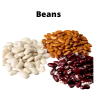
Beans are a nutritious and versatile food that can be enjoyed in a variety of dishes. They are an excellent source of protein, fiber, vitamins, and minerals, making them a healthy addition to any diet.
There are many different types of beans, including black beans, kidney beans, navy beans, and pinto beans.
Beans are a cool-season crop that can be planted in early spring. The soil should be well-drained and rich in organic matter. Beans can be grown from seed or started indoors and transplanted outdoors after the last frost.
Water beans regularly, especially during periods of drought. Fertilize the plants every few weeks with a balanced fertilizer. Harvest beans when the pods are young and tender. Cut the pods from the plant using a sharp knife.
Coriander
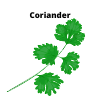
You certainly can grow coriander in your kitchen garden! Coriander is a great herb to have on hand, as it’s versatile and perfect for spicing up any dish. Here are a few tips to get you started:
- Start with high-quality seeds. If you can find them, look for heirloom or organic varieties.
- Choose a sunny spot in your garden for planting. Coriander likes full sun but will also tolerate partial shade.
- Prepare the soil before planting by loosening it and adding some compost or manure. This will help the roots of your plants to spread more easily.
- Sow the seeds directly into the ground, spacing them
Some potential benefits of coriander seed include its ability to improve digestion, circulation, and respiratory function. Additionally, coriander may help to detoxify the body and protect against liver damage. Coriander is also a natural anti-inflammatory agent, which can be beneficial for people with conditions like arthritis. Finally, coriander has been shown to boost cognitive function and help protect the brain from age-related damage.
Basil
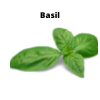
Sure, you can grow basil in your kitchen garden! In fact, basil is a great plant to grow indoors since it doesn’t require much space. Plus, you’ll have fresh basil on hand whenever you need it for cooking.
To get started, all you need is a pot or container with drainage holes, some potting soil, and some basil seeds. Once you have those things, simply fill the pot with soil and plant the seeds according to the package instructions. Then water regularly and place the pot in a spot that gets plenty of sunlight.
Basil is an aromatic herb that has a wide range of health benefits. It is rich in antioxidants and beneficial compounds that can help protect the body from free radical damage. Additionally, basil has anti-inflammatory properties, making it beneficial for those with inflammatory conditions such as arthritis or asthma. Basil also aids in digestion and can help to relieve gas and bloating. Furthermore, basil is a good source of vitamins A, C, and K and minerals like iron and potassium. So if you want to improve your overall health or add more flavor to your food, make sure to include basil in your diet!
Mint

Some benefits of mint include its ability to improve respiratory health, treat digestive issues, improve oral health, and boost energy levels. Additionally, mint is a source of antioxidants and vitamins A and C, which help improve overall health. Some people also find that mint helps soothe stomach aches and headaches.
Growing mint in your kitchen garden is a great way to add a touch of flavor to your cooking. Mint is a hardy herb that can tolerate a wide range of growing conditions, so it’s fairly easy to care for. Here are a few tips on when and how to grow mint in your garden:
-Mint prefers partial shade and well-drained soil. If you’re growing mint indoors, try placing it near a south- or west-facing window.
-Water mint regularly, keeping the soil moist but not soggy. As with most herbs, mint benefits from moderate watering – too much water can damage the leaves and reduce the flavor of the herb.
-Fertilize
Chives
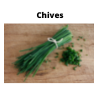
Chives are incredibly easy to grow and require little maintenance. They are a great addition to any garden because they add flavor to soups, salads, and other dishes. They also have a number of health benefits, including the following:
- Chives are a good source of vitamins A and C and folic acid.
- They contain powerful antioxidants that help protect cells from damage and may play a role in preventing cancer.
- They have anti-inflammatory properties that can help relieve pain and swelling associated with inflammatory conditions such as arthritis.
- Eating chives may help lower cholesterol levels and reduce the risk of heart disease.
- They also make a beautiful garnish for any dish.
- Chives are naturally low in calories and fat.
Dill
Dill weed is a great herb to grow in your garden because it’s a flavorful addition to many dishes and a natural herb that can help to soothe digestion. Additionally, dill weed is a good source of vitamins and minerals, including vitamin A, calcium, iron, magnesium, and potassium.
Dill also has anti-inflammatory properties and can help improve digestion. Additionally, dill can be used to ward off pests like aphids and mosquitoes and give other herbs a peppery flavor.
Parsley
If you’re looking for an herb that’s versatile and easy to grow, parsley should be at the top of your list. This nutrient-rich biennial plant can be used in a variety of dishes, and it also offers a host of health benefits.
Parsley is a good source of vitamins A, C, and K, as well as antioxidants and phytochemicals. In addition to being an excellent digestive aid, Parsley has been shown to protect against osteoporosis, reduce inflammation, and improves heart health.
Parsley is also rich in antioxidants and phytochemicals, which have been shown to protect against certain cancers and help boost overall immunity.
In addition to its many health benefits, parsley also adds a delicious flavor to recipes.
Conclusion
If you are looking for plants to grow in your garden, the ones we’ve listed here should be a great place to start. Not only are they beautiful and add color and life to any space, but they also have a wealth of benefits for your health. So why not try growing some of these herbs and plants in your garden this year?











